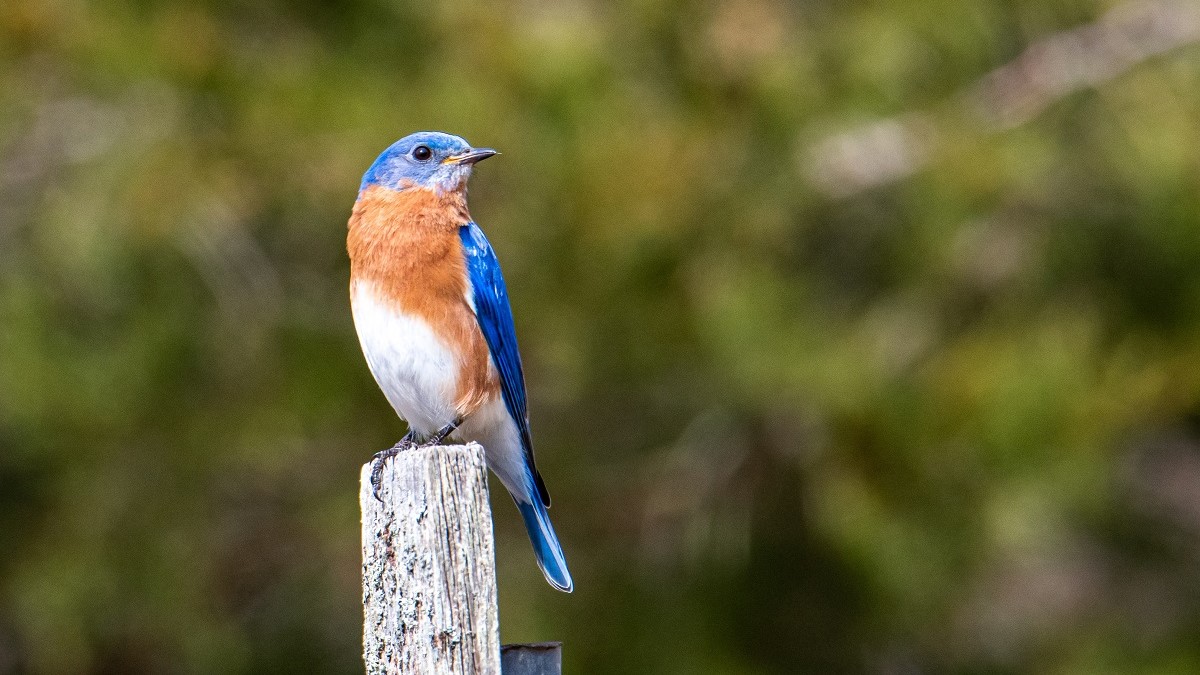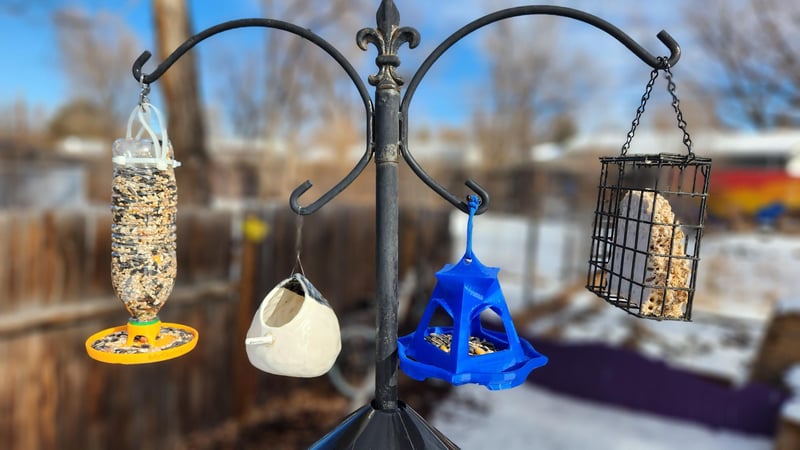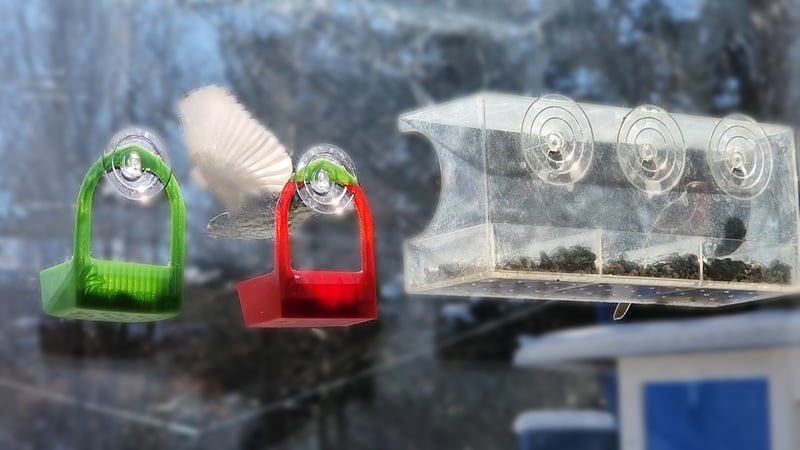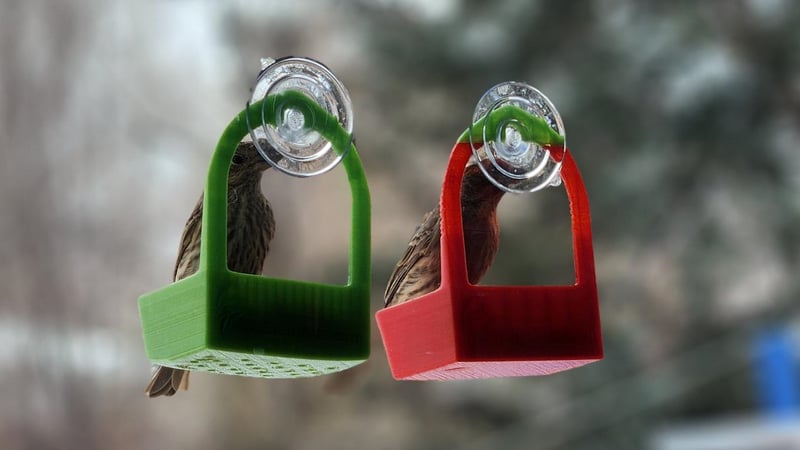
Just over a year ago I started birding, or bird watching as you may know it. I have always loved nature, learning about my local plants, and doing native gardening. Learning about birds was a natural extension of that. One of my absolute favorite parts of birding is “Backyard Birding.” Essentially, backyard birding is observing and appreciating the birds who are right around one’s backyard, schoolyard, or outdoor space. Think life science meets “I Spy.” Of course, working with teachers and students, backyard birding can also be "Schoolyard" birding, incorporating STEAM to foster critical thinking and observation skills. Imagine you and your students excitedly saying, “Oh, that’s a mountain chickadee! And there’s a dark-eyed junco. Oh, hello cute lesser goldfinch!”
Birding is not only accessible for all ages but can also be enjoyed anywhere, including on campus. Importantly, it can also help you address a wide variety of learning standards. Through birding activities, you can delve into identifying distinct species and compare traits. Focus on attention to detail and using description words. Describe the colors of the bird, the size, the patterns on the wings. Use body parts - Is there red on the head, on the belly, on the wings? Bird names work well for this, as they often reflect the colors in specific areas, like the yellow-rumped warbler or the red-breasted nuthatch. Show pictures of these birds on your Boxlight interactive display for students to recognize the distinct features of each species.
Beyond science-related activities, you can easily integrate birding with reading, writing, and art. Have students describe a bird to a friend who then tries to guess it. Or, as an art project, have students draw a specific bird, while also researching its habitat, diet, and more.
Birding also promotes the exploration of variations within species, including lifecycles and distinctions between juvenile and adult birds. Emphasize differences between male and female birds, for example facilitating a discussion on the purpose behind vibrant plumage in males compared to females.
For math integration, students can gather data on the frequency of each species' visits. Turn this data into graphs and conduct analyses. Explore whether the same species visit consistently throughout the year or selectively during particular months. Look into the reasons behind bird migration and understand why some species are present in your environment only during specific times.
Hopefully, I've inspired you with a few ideas on how to incorporate birding into your class. Now, let me share some tips to help you get started.
National Bird Feeding Month
February is National Bird Feeding Month and setting up a bird feeder or two is one of the best ways to improve your backyard (or schoolyard) birding experience. There are many varieties of bird feeders to choose from, but you can get creative and use your Robo 3D printer to make one! Better yet, transform this into a STEAM Design Challenge. Have students collaborate in groups to create their unique birdfeeders. Search “bird feeder” in Thingiverse for some inspiration or print one a pre-designed feeder now available on www.MyStemKits.com - Bird Feeder Kit. Explore the variety of choices, including hanging feeders, feeders made from repurposed water bottles, window-based bird feeders, and options for wall, pole, and table mounting. If don’t have a MyStemKits account, sign up for a free trial to print one of our designs.

After purchasing or 3D printing your bird feeder, find an optimal location for it. It's important to keep bird food dry. If your chosen design doesn't provide this feature, be sure to place it under an overhang or design a cover to protect the food. Birds don’t like soggy seeds and I can't say I blame them!
To keep feeders away from squirrels, consider hanging them far from trees and buildings or using overhanging roofs and slippery posts. You can also consider hanging them right from the window with a suction-cup style feeder. To deter squirrels, there are options like spicy birdseed and repellent tools but please avoid methods that may harm wildlife, such as using oil.

After 3D printing your feeders, select local bird-friendly seeds. If you’re uncertain about which to purchase, consult a bird shop for guidance and opt for different seed types to attract a variety of birds. Just keep in mind, birds may take about a week or so to discover a new feeder, so if you don't see any visitors right away, don't lose hope – just give it some time!
Clean your bird feeder monthly to ensure the health of visiting birds, preventing mold, bacteria, and disease spread. Empty seeds, disassemble, scrub with mild detergent, rinse, let thoroughly dry, and then reassemble and rehang.
Finally, there are a variety of apps that can help you and your students learn about the native birds in your area and identify potential visitors. One of my favorites is called Merlin; it can identify species by sound and has a wonderful library of bird images and information. One note, though, is that sometimes Merlin can be incorrect, so always double-check the sound recordings for what that bird should sound like and ideally get a visual of the bird as well. It’s a powerful AI (Artificial Intelligence) device but has its limitations. It is also limited in certain environments. For example, if you’re in Hawai’i, explore options that are more local to your area.
I hope you enjoy your foray into birding and learn to love and appreciate the birds around you, including from your classroom window! If you get any good bird pictures or design any fun bird feeders, please share!



